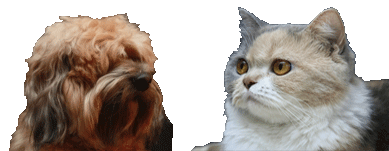Vet Terminology starting with T on Bruning.com – from T Cell to Type II diabetes
[A][B][C][D][E][F][G][H][I][J][K][L][M][N][O][P][Q][R][S][T][U][V][W][X][Y][Z]
T cell –
Also called ‘T lymphocytes.’ The type of lymphocyte which is responsible for cell-mediated immunity. T cells may directly kill a cell or produce chemicals called lymphokines that activate macrophages which will kill the cell. Compare with ‘B cell.’
Tachycardia –
An abnormally high heart rate.
Tachypnea –
Rapid breathing.
Tarsus –
The ankle (rear leg) of dogs and cats; also called the hock.
Tartar –
A build-up of bacteria, saliva, and food on the teeth which becomes mineralized, forming a hard coating and eventually causing gum disease and tooth loss. See also ‘Plaque.’
Temporomandibular joint –
The joint between the lower jaw and the skull.
Third generation –
A description of medications developed from an earlier form of the medication. First generation medications were developed from the original form of the drug; second generation medications are adaptations of first generation drugs; third generation drugs are adaptations of second generation, etc.
Thrombocytopenia –
A lower than normal number of platelets in the blood. Platelets, which are actually fragments of specific types of cells, are necessary for blood to clot. Signs of thrombocytopenia include bruising and bleeding from the nose, into the gastrointestinal tract, etc.
Thyrotropin releasing hormone –
Hormone produced by the hypothalamus that stimulates the pituitary gland to produce thyrotropin (thyroid stimulating hormone-TSH), which in turn stimulates the thyroid gland to produce thyroid hormone. Also called TSH releasing factor or TSH releasing hormone.
Tissue –
A group of specialized cells that together perform a particular function, e.g., muscle tissue, nerve tissue, bone.
Titer –
A measurement of the amount of antibodies in the blood. The test to measure antibodies is usually performed by making a number of dilutions of the blood and then measuring at what dilution there is sufficient antibody to react in the test. For example, a titer of 1:8 (one to eight) means the blood can be diluted to one part blood and seven parts saline and still produce a positive reaction in the test. The higher the titer (1:16 is higher than 1:8), the more antibody is present. (NOTE: The word ‘titer’ may also be used when discussing the amount of antigen present, e.g., a high titer vaccine has a large number of virus particles.)
Topical –
To be used on the skin.
Torticollis –
Torticollis is also known commonly as “wry neck.” It is a deformity of the neck in which the head tilts toward one shoulder and is simultanously the chin rotates toward the opposite shoulder. It can be causes by:
Torsion –
The twisting of an organ.
Toxemia –
A condition in which toxins move into the bloodstream.
Tracheobronchitis –
Inflammation of the trachea and bronchi.
Transient –
Temporary.
Transport host –
An animal or insect which carries an immature parasite from one mammalian host to another.
Tricyclic antidepressant –
A class of antidepressants which work by decreasing the amount of certain chemical transmitters taken up by specific nerve cells. The tricyclic antidepressants include clomipramine, amitriptyline, and nortryptyline and are often used to treat behavioral problems in small animals.
Tubule –
Microscopic ducts. The tubules in the kidneys help to concentrate the urine.
Tumor –
Abnormal growth or swelling; term often used to designate cancer.
Type I diabetes –
A form of diabetes in which so little insulin is produced that supplemental insulin must be given for the animal to live. Also called insulin dependent diabetes mellitus (IDDM).
Type II diabetes –
A type of diabetes mellitus in which although the blood glucose levels are higher than normal, they are not immediately life-threatening, and the animal can survive without supplemental insulin. Also called non-insulin dependent diabetes mellitus (NIDDM).

